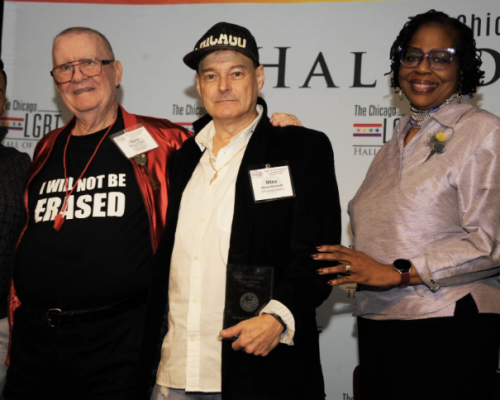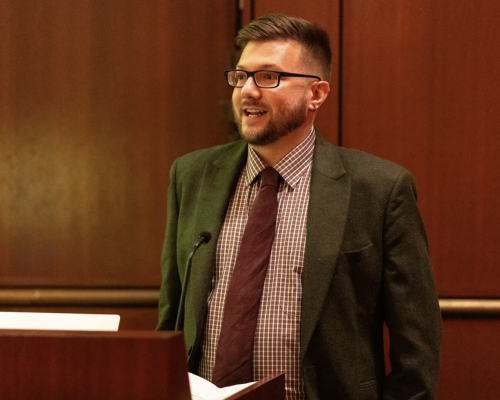Offers information for use in connecting LGBT media with wedding industry businesses
by Chuck Colbert
New Jersey, Hawaii and Illinois are the newest states where same-sex marriage is now legal or will be next spring. And just as state lawmakers and a court decision recently ushered in marriage-equality there, so a newly released marketing study of same-sex couples sheds light on the growing, if not booming, lesbian and gay wedding industry — along with implications for publishers and editors in LGBT media.
The study, conducted by San Francisco-based Community Marketing Insights (CMI) and The Gay Wedding Institute, surveyed 916 same-sex couples nationwide. Conducted August-September 2013, the online survey took 10 minutes to complete. Results were released last month in a 38-page report, “Same-Sex Couples: Weddings and Engagements.”
From the survey, 57 percent were married, 19 percent in domestic partnerships, 18 percent engaged, with five percent in civil unions. A majority of respondents were from California (29 percent), Massachusetts (17 percent) and New York (16 percent).
“This breakthrough study is the widest-reaching ever of same-sex couples and reflects the diversity of our community — from those who eloped at city hall to those who had a more formal celebration,” said David Paisley, CMI’s senior research director.
“What we learned is fascinating and would be of interest to anyone involved in the wedding industry,” said Bernadette Coveney Smith, president of The Gay Wedding Institute. “By and large, same-sex couples are quite non-traditional, especially gay grooms. We learned that the terms ‘husband’ and ‘wife’ haven’t quite caught on with much of our community, and how important it is for wedding professionals to have inclusive language and photos in their marketing materials.”
In all, it seems that language really does matter.
According to survey results, only about half of same-sex couples use the words “husband” or “wife.” Overall, the couples prefer to use “spouse” and “partner,” perhaps because husband/wife is a relatively new concept within the LGBT community.
Also of note, the survey found that “the economic impact of same-sex couples legally married is three times greater than those receiving a civil union or domestic partnership because married couples are far more likely to have receptions with guests or their receptions have a greater number of guests.”
In other findings, female couples spend more on weddings than male same-sex couples — 15 percent more for those already married. At the same time, women are more likely to embrace “wedding ceremony traditions” than men.
Another interesting finding: Only 24 percent of same-sex marrying couples ask a religious leader to solemnize their weddings, with only 12 percent holding wedding ceremonies at a religiously-affiliated location.
As veteran journalist Lisa Keen noted in her reporting for Keen News Services, “It’s not clear, of course, whether the low percentages are due to an existing religious exemption or the choice of the same-sex couples, but a separate study this year that surveyed brides in heterosexual couples found that 61 percent used a member of the clergy to officiate and 35 percent held their ceremony in a religious setting.”
Oddly enough, Keen notes, “Each time a state legislature debates a marriage equality bill, as Hawaii and Illinois did [last] month, a significant amount of time is spent wrestling over how big a loophole to provide for religious clergy and entities to refuse services to same-sex couples.”
The CMI/Wedding Institute survey comes just months after the U.S. Supreme Court struck down the 1996 Defense of Marriage Act and restored same-sex marriage in California. There, same-sex couples were banned from marrying when voters in the fall of 2008 adopted Proposition 8.
In Southern California, survey results were released at the same time Frontiers Media produced its inaugural Lesbian and Gay Wedding Exposition, held downtown at the Los Angeles Athletic Club on Nov. 10.
Frontiers news editor Karen Ocamb, who reported on the event, offered her assessment of the study and its usefulness to gay media and beyond.
“The CMI survey came out just as I was writing my piece on the very successful Wedding Expo produced by Frontiers Media, so rather than influencing the story or event, it provided interesting corollary data,” she said.
“I hope the survey inspires others to produce similar expos with LGBT and LGBT-friendly businesses because there is an incredible need and hunger for this information — especially since, in many cases, the couples don’t even realize all the details that go into wedding planning, including the expense and the importance of cultural competence,” said Ocamb. “While the survey suggests that only about half of same-sex couples prefer the words ‘husband’ and ‘wife,’ in my reporting on marriage equality over the years I found that those terms are profoundly important and represent equality to those for whom the dream of a traditional marriage was something they thought they had to forego when they came out. It’s imperative that a culturally competent wedding planner understand these significant nuances.”
However, Trenton-based Out in Jersey publisher Peter Frycki offered a lukewarm response to the study’s findings.
“The results seem to solidify that there is not a gold mine to extract dollars from,” he said. Here in New Jersey, Frycki explained, “Marriage equality went in fits and starts from domestic partnerships then to civil unions and now marriage,” so “it seems couples never had the whole enchilada to celebrate fully. Older couples had to overcome obstacles. Therefore, many couples had mostly small incremental celebrations.”
Still, he said, “Time will tell as we move ahead in 2014 and the younger folks celebrate full equal status in New Jersey.”
Civil unions took effect in the Garden State in February 2007. Same-sex marriage has been legal there since October 21, 2013, because of a court ruling, which invalidated the state’s restriction of issuing marriage licenses only to opposite-sex couples.
In Illinois, Tracy Baim, publisher and executive editor of Chicago-based Windy City Times, said, “We have seen an uptick since civil unions became law two years ago, and for sure expect more coming up.”
And yet, she added, “We make sure people don’t think this is an easy market to just throw an ad at, so we have many ways for them to advertise across many price levels. We have a quarterly wedding guide already in place, so we will keep that going in 2014.”
For his part, Todd Evans of Rivendell Media offered an assessment on the connection between the wedding industry and the potential for LGBT publications in expanding their local advertising bases. “Same-sex weddings have the opportunity to really help local gay media because the wedding industry is a multi-billion dollar industry that is mostly comprised of local service businesses,” he said, referring to wedding planners, catering halls, florists, jewelry stores and gift shops.
“I know when Massachusetts was the first state with legal gay marriage, [Boston-based] Bay Windows really saw a business boom at the time. It all depends, of course, on how well the local sales staff sells the idea,” added Evans, who is also publisher of Press Pass Q.
Perhaps the most creative approach is at Philadelphia Gay News (PGN), which reaches into New Jersey and Delaware.
“The results did not really surprise us,” said Dan Calhoun, PGN’s director of marketing and advertising. “They were fairly on par with what we had expected.”
Nonetheless, PGN has taken a longer-view approach to the wedding industry and its capacity for ad revenues — even story lines.
“PGN started a wedding issue in the fall of 2011. It didn’t do well. It was the first time we were contacting this group of advertisers, who hadn’t heard of us before and they didn’t see a reason to advertise specifically to the LGBT community,” explained Calhoun. “Four months later, in the spring of 2012, we tried again. This time we explained the rapid growth in the market to potential advertisers and that our readers are traveling to neighboring New Jersey and Delaware to get married, in addition to our readers already living in those areas, and that they serve as a new market for them to tap into. We also started explaining that advertising directly to the LGBT community lets them know that the community is welcome in their establishments, and they won’t have to worry about being discriminated against on their special day and leading up to it. The result, our LGBT Wedding Issue, has become our fourth-largest issue of the year and has grown every year since its inception. Editorial support in the wedding issue ensures that this is more than an advertising gimmick, but an emerging market for advertisers to tap into.”
And that’s not all for PGN:
“Due to the growth of this issue and interest in LGBT weddings, the editorial, marketing and sales teams have brainstormed well in advance for our next LGBT wedding issue,” Calhoun explained. “Current plans include following the journey of our recently engaged editor, Jen Colletta, on her wedding planning; stronger marketing efforts to have our readers let us know about their wedding announcements; and we are in the early stages of planning various contests for engaged readers to win free wedding services in physical challenges. Our hope is that this will create a bigger buzz for this issue and give advertisers a better response, while creating great photo ops for story coverage for our readers.”
Meanwhile, it’s an Aloha state of mind in Hawaii where same-sex marriages began on Dec. 2 in the nation’s newest marriage equality state.
Ed Walsh traveled to Hawaii several weeks ago to celebrate the advent of gay marriage, reporting for San Francisco’s Bay Area Reporter. In a Nov. 28 article (“Hawaii gears up for same-sex marriage”), he noted, “Maui has long been one of the most popular wedding destinations in the world and business leaders on the island hope that will translate into gays flocking to the Aloha State to tie the knot.”
TOP STORY
Volume 15
Issue 9






